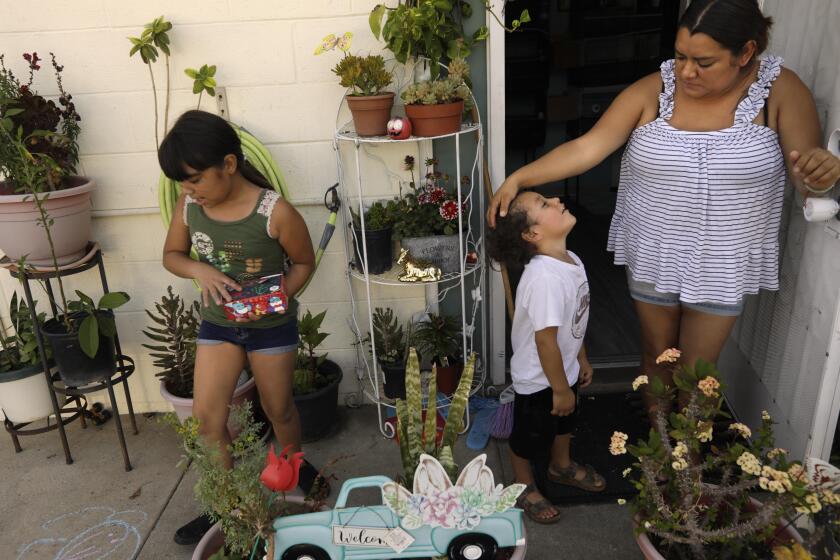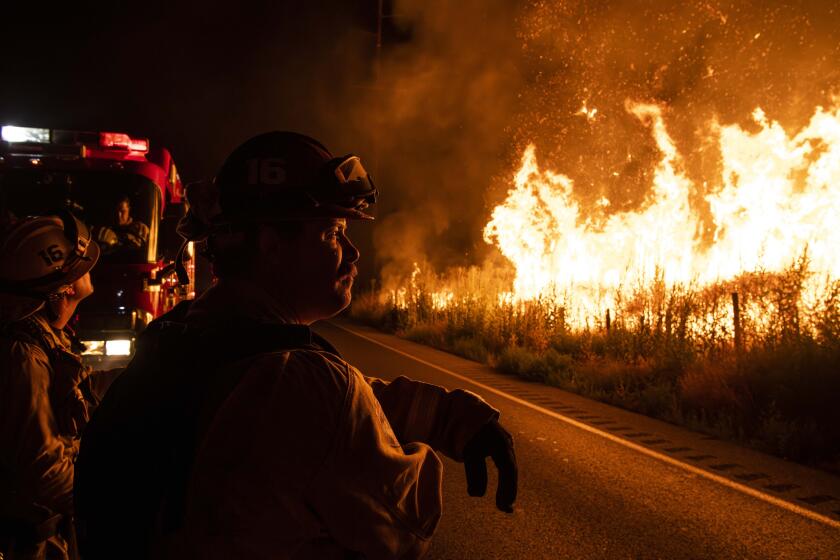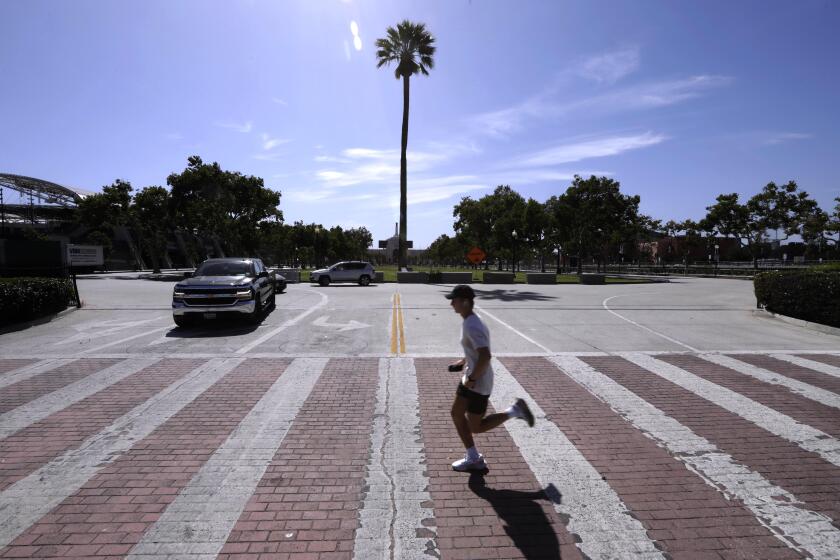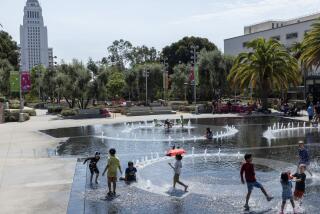How hot can it get in SoCal? Heat wave to push temperatures into triple digits

- Share via
A heat wave is expected to push temperatures in Southern California this week into the triple digits, increasing the risk of fire danger and heat-related illness in the region.
The hottest days are expected to be Thursday and Friday, with the coastal plains reaching the mid-80s to mid-90s Thursday and the upper 90s for the valleys, according to National Weather Service meteorologist Rich Thompson. It’s expected to be slightly cooler along the central coast, with temperatures in the upper 70s to low 80s.
What are heat-related illnesses and how are they treated? Are they preventable or inevitable? We talked to health experts for the answers.
On Friday, there could be slight cooling by the coastal areas by a few degrees, but temperatures in the valleys are expected to climb into the mid-90s to 100 degrees. It’s expected to start cooling off Saturday and Sunday by 3 to 4 degrees each day.
The combination of a high-pressure loft in the atmosphere and weak, offshore Santa Ana winds, with northeastern gusts between 35 to 45 mph, has resulted in the heat wave.
“This is Santa Ana season — we expect these patterns to develop this time of year during October and November,” Thompson said. “This is nothing out of the ordinary.”
Recent storms have dampened conditions but have also spurred new vegetation that could act as fuel for fires. Also, strong fall winds have yet to arrive.
Residents have been advised to limit outdoor activities, especially during the hottest parts of the day, drink plenty of fluids, dress in lightweight clothing and check on their neighbors.
The dry weather and wind could also increase fire danger to the region. Thompson warned people to watch out for any ignition sources.
A wind advisory has been issued by the National Weather Service for the western San Gabriel Mountains and the Highway 14 corridor, including the cities of Acton, Warm Springs and Mill Creek until 3 p.m. Wednesday. Northeastern winds are expected to range between 25 and 35 mph, with gusts up to 50 mph.
The winds could blow around unsecured objects and make driving more difficult. Tree limbs could be blown down, and a few power outages could result.
Cities are being urged to expand their urban tree canopy to mitigate the effects of climate change, but some are replacing mature shady trees with palms.
More to Read
Sign up for Essential California
The most important California stories and recommendations in your inbox every morning.
You may occasionally receive promotional content from the Los Angeles Times.














